ATF Releases 2014 Federal Firearm Licensee Loss/Theft Report
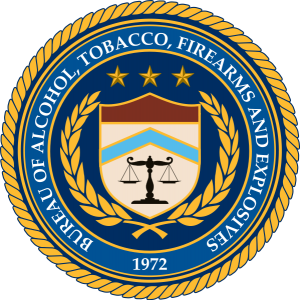 The Bureau of Alcohol, Tobacco, Firearms and Explosives (ATF) released its Federal Firearm Licensee (FFL) Theft/Loss Report for calendar year 2014. The report includes a state-by-state breakdown and detailed accounting of the types of firearms reported lost or stolen by FFLs between the dates of Jan. 1 and Dec. 31, 2014.
The Bureau of Alcohol, Tobacco, Firearms and Explosives (ATF) released its Federal Firearm Licensee (FFL) Theft/Loss Report for calendar year 2014. The report includes a state-by-state breakdown and detailed accounting of the types of firearms reported lost or stolen by FFLs between the dates of Jan. 1 and Dec. 31, 2014.
FFLs are required to report to ATF each missing, lost, or stolen firearm within 48 hours of discovery of the loss or theft. In addition, the FFL must also report the firearm theft or loss to the appropriate local law enforcement agency. Once ATF receives a report from an FFL, the lost or stolen firearm(s) is entered into the Firearms Tracing System (FTS).
Lost and stolen firearms can pose a substantial threat to public safety and to law enforcement. In 2009 Jason Scott burglarized a FFL in Maryland stealing approximately 35 firearms. The investigation into the burglary of the FFL not only led to the recovery of all the stolen weapons, it ultimately led to Scott being implicated in five murders, nine armed home invasions, and more than 30 residential burglaries. He is serving a 100-year federal sentence. Continue reading
ATF Pulls Proposed M855 Ammo Ban
Directly from the ATF:
NOTICE TO THOSE COMMENTING ON THE ARMOR PIERCING AMMUNITION EXEMPTION FRAMEWORK
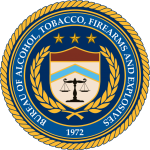 Thank you for your interest in ATF’s proposed framework for determining whether certain projectiles are “primarily intended for sporting purposes” within the meaning of 18 U.S.C. 921(a)(17)(C). The informal comment period will close on Monday, March 16, 2015. ATF has already received more than 80,000 comments, which will be made publicly available as soon as practicable.
Thank you for your interest in ATF’s proposed framework for determining whether certain projectiles are “primarily intended for sporting purposes” within the meaning of 18 U.S.C. 921(a)(17)(C). The informal comment period will close on Monday, March 16, 2015. ATF has already received more than 80,000 comments, which will be made publicly available as soon as practicable.
Although ATF endeavored to create a proposal that reflected a good faith interpretation of the law and balanced the interests of law enforcement, industry, and sportsmen, the vast majority of the comments received to date are critical of the framework, and include issues that deserve further study. Accordingly, ATF will not at this time seek to issue a final framework. After the close of the comment period, ATF will process the comments received, further evaluate the issues raised therein, and provide additional open and transparent process (for example, through additional proposals and opportunities for comment) before proceeding with any framework.
You spoke, we listened. @ATFHQ plans more study on the proposed AP Ammo exemption framework. See more http://t.co/SmRKMYvw7J
— ATF HQ (@ATFHQ) March 10, 2015
NRA-ILA: BATFE To Ban Common AR-15 Ammo
M855 ‘Armor Piercing’ Classification Could Drastically Impact Ammunition Availability
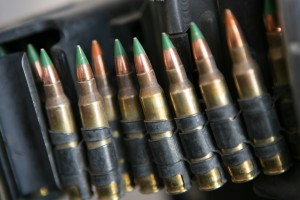 In a move clearly intended by the Obama Administration to suppress the acquisition, ownership and use of AR-15s and other .223 caliber general purpose rifles, the Bureau of Alcohol, Tobacco, Firearms and Explosives unexpectedly announced today that it intends to ban commonplace M855 ball ammunition as “armor piercing ammunition.” The decision continues Obama’s use of his executive authority to impose gun control restrictions and bypass Congress.
In a move clearly intended by the Obama Administration to suppress the acquisition, ownership and use of AR-15s and other .223 caliber general purpose rifles, the Bureau of Alcohol, Tobacco, Firearms and Explosives unexpectedly announced today that it intends to ban commonplace M855 ball ammunition as “armor piercing ammunition.” The decision continues Obama’s use of his executive authority to impose gun control restrictions and bypass Congress.
It isn’t even the third week of February, and the BATFE has already taken three major executive actions on gun control. First, it was a major change to what activities constitute regulated “manufacturing” of firearms. Next, BATFE reversed a less than year old position on firing a shouldered “pistol.” Now, BATFE has released a“Framework for Determining Whether Certain Projectiles are ‘Primarily Intended for Sporting Purposes’ Within the Meaning of 18 U.S.C. 921(a)(17)(c)”, which would eliminate M855’s exemption to the armor piercing ammunition prohibition and make future exemptions nearly impossible.
By way of background, federal law imposed in 1986 prohibits the manufacture, importation, and sale by licensed manufacturers or importers, but not possession, of “a projectile or projectile core which may be used in a handgun and which is constructed entirely . . . from one or a combination of tungsten alloys, steel, iron, brass, bronze, beryllium copper, or depleted uranium.” Because there are handguns capable of firing M855, it “may be used in a handgun.” It does not, however, have a core made of the metals listed in the law; rather, it has a traditional lead core with a steel tip, and therefore should never have been considered “armor piercing.” Nonetheless, BATFE previously declared M855 to be “armor piercing ammunition,” but granted it an exemption as a projectile “primarily intended to be used for sporting purposes.”
Now, however, BATFE says that it will henceforth grant the “sporting purposes” exception to only two categories of projectiles: Continue reading
ATF Receives Nearly 9,500 Comments on Proposed NFA Trust Rule Change 41P
Responses include 100+ pages from David M Goldman, 17 from NRA-ILA
 The Department of Justice’s (DOJ) Bureau of Alcohol, Tobacco, Firearms, and Explosives (BATFE) received 9,479 comments filed regarding docket ATF-2013-0001: Machine Guns, Destructive Devices and Certain Other Firearms: Background Checks for Responsible Persons of a Corporation, Trust or Other Legal Entity with Respect to Making or Transferring a Firearm.
The Department of Justice’s (DOJ) Bureau of Alcohol, Tobacco, Firearms, and Explosives (BATFE) received 9,479 comments filed regarding docket ATF-2013-0001: Machine Guns, Destructive Devices and Certain Other Firearms: Background Checks for Responsible Persons of a Corporation, Trust or Other Legal Entity with Respect to Making or Transferring a Firearm.
The proposed rule change is summarized on its regulations.gov site as: “The Department of Justice is planning to finalize a proposed rule to amend the regulations of the Bureau of Alcohol, Tobacco, Firearms, and Explosives (ATF) regarding the making or transferring of a firearm under the National Firearms Act. As proposed, the rule would (1) add a definition for the term “responsible person”; (2) require each responsible person of a corporation, trust or legal entity to complete a specified form, and to submit photographs and fingerprints; and (3) modify the requirements regarding the certificate of the chief law enforcement officer (CLEO).”
In layman’s terms, what 41P does is require anyone obtaining an NFA firearm as a legal entity (e.g. an NFA Trust, LLC, or Corporation) to submit fingerprints, photographs, and proof of US citizenship along with their local Chief Law Enforcement Officer’s (CLEO) approval for each purchase or transfer. In many jurisdictions, this results in de facto ban on NFA firearms where the CLEO refuses to approve NFA transfers either because they are ignorant of NFA items or are outright anti-gun.
Among the comments received is a 17 page document filed by Chris Cox on behalf of the National Rifle Association’s Institute for Legislative Action (NRA-ILA). In his comments, Cox references a number of other comments, including those filed by NFA Gun Trust Lawyer Blog’s David M. Goldman in his 55 page submission accompanied by another 88 pages of supporting exhibits. Cox goes on to point out their three main objections to the change:
First, its requirements are not authorized by the NFA and are therefore illegal for the Bureau of
Alcohol, Tobacco, Firearms and Explosives (ATF) to impose. Second, the requirements could effectively block even those who are lawfully entitled to receive and possess NFA firearms from doing so under the very regime Congress created, and most states recognize, for this purpose. On the other hand, ATF has articulated no reason why the current regime has proven unworkable or how imposing these additional burdens on responsible, law-abiding persons would enhance public safety.
The comments appear to be overwhelmingly in opposition to the changes in 41P and articulate many reasons why the proposal should not be implemented. The BATFE must now review all of the submitted comments and replies before making a decision – which is expected to come in early 2015.
Watson v. Holder: Second NFA Lawsuit Filed Challenging 922(o)
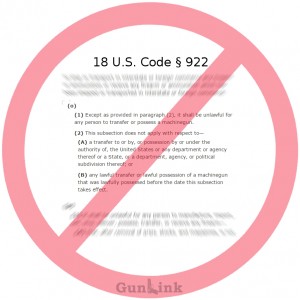 Following on the heels of the Hollis v Holder lawsuit filed in late October, Mississippi attorney Stephen Stamboulieh – along with additional counsel David Scott – have brought a second suit alleging that, through 18 U.S.C. §922(o), 26 U.S.C. § 5801 et seq. and the implementing regulations 27 C.F.R. § 479.105(a), the US government has overstepped their powers as provided for under Article I of the US Constitution and violate the Ninth and Tenth amendments by creating a de facto machine gun ban. Additionally, the suit claims, the regulations violate the plaintiff’s (and others’) Second Amendment rights. This is part of the case made in the Watson v. Holder complaint filed last week.
Following on the heels of the Hollis v Holder lawsuit filed in late October, Mississippi attorney Stephen Stamboulieh – along with additional counsel David Scott – have brought a second suit alleging that, through 18 U.S.C. §922(o), 26 U.S.C. § 5801 et seq. and the implementing regulations 27 C.F.R. § 479.105(a), the US government has overstepped their powers as provided for under Article I of the US Constitution and violate the Ninth and Tenth amendments by creating a de facto machine gun ban. Additionally, the suit claims, the regulations violate the plaintiff’s (and others’) Second Amendment rights. This is part of the case made in the Watson v. Holder complaint filed last week.
A twist on this case compared to the previously filed Hollis v Holder complaint is that the defendant, Ryan Watson, as a trustee of the Watson Family Gun Trust, had already made the 10.5″ barreled Palmetto State Armory (serial number LW001804) into a machine gun as per the Form 1 as approved by ATF official, Shannon Siviero. It was sometime after this that the ATF “changed their minds,” whited out the relevant portions of the approved From 1, and demanded that Watson “abandon or otherwise surrender” the machine gun and stamp. Following subsequent communications between Watson and the ATF (including a promise of no further criminal prosecution), Watson surrendered, under protest, the new machine gun to the ATF – although maintaining his ownership interest.
This demand for not only the plaintiff’s approved Form 1 and tax stamp (bought, paid for, and issued), but also the machine gun manufactured pursuant to that approval, is the basis for the charge of violating Watson’s Fifth Amendment rights
No person shall be held to answer for a capital, or otherwise infamous crime, unless on a presentment or indictment of a Grand Jury, except in cases arising in the land or naval forces, or in the Militia, when in actual service in time of War or public danger; nor shall any person be subject for the same offence to be twice put in jeopardy of life or limb; nor shall be compelled in any criminal case to be a witness against himself, nor be deprived of life, liberty, or property, without due process of law; nor shall private property be taken for public use, without just compensation. – Amendment V of the United States Constitution
In both cases, declaratory and injunctive relief is sought in the form of either declaring the laws and regulations noted above to be unconstitutional or, alternatively, to find that unincorporated trusts are not prohibited by 922(o) from manufacturing or possessing post-May 19, 1986 machine guns as individuals would be under the Hughes Amendment to the Firearms Owner Protection Act.
DOJ Document Dump: 64,280 Pages of Fast and Furious Docs
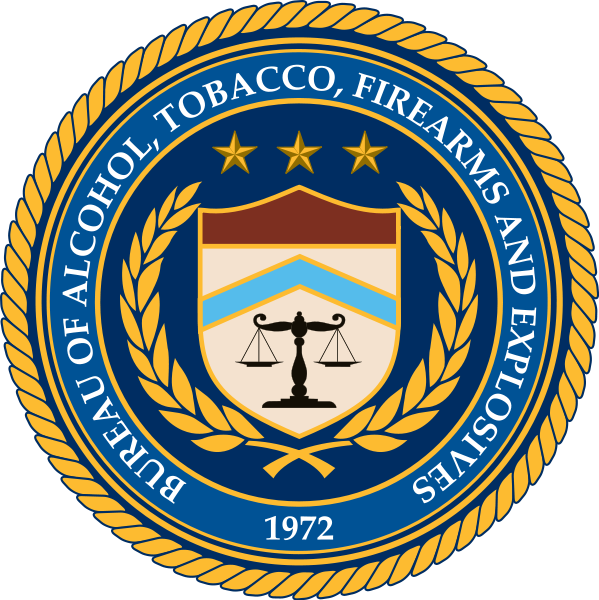 Documents Released Less Than Two Weeks After DOJ Head Eric Holder Announces Resignation
Documents Released Less Than Two Weeks After DOJ Head Eric Holder Announces Resignation
After years of refusing to share Operation Fast and Furious information – even in the face of House Oversight Committee demands, a lawsuit in federal court, and contempt charges – the Justice Department released more than 64,000 pages of documents related to the botched gun running operation. The move, according to the Committee’s statement, is effectively an admission that the Justice Department never had legitimate grounds to withhold these documents in the first place.
Even given the massive scope of the documents handed over, they still only partially meets the committee’s information request. “When Eric Holder wants to know why he was the first Attorney General held in criminal contempt of Congress, he can read the judge’s order that compelled the production of 64,280 pages that he and President Obama illegitimately and illegally withheld from Congress,” said Rep. Darrell Issa (R-CA), chairman of the committee on House Oversight and Government Reform. “Since these pages still do not represent the entire universe of the documents the House of Representatives is seeking related to the Justice Department’s cover-up of the botched gun-walking scandal that contributed to the death of a Border Patrol agent, our court case will continue.” Continue reading








